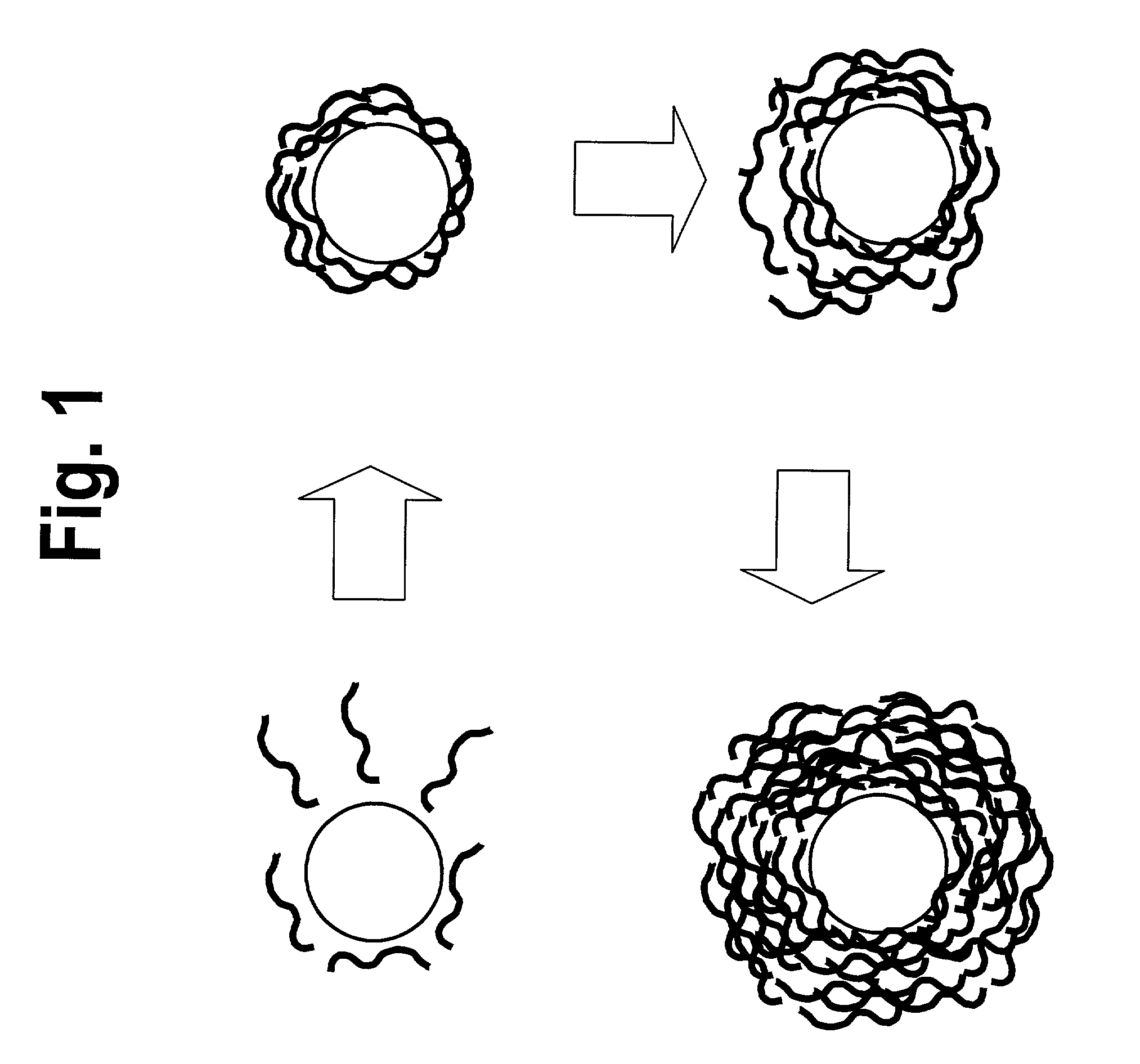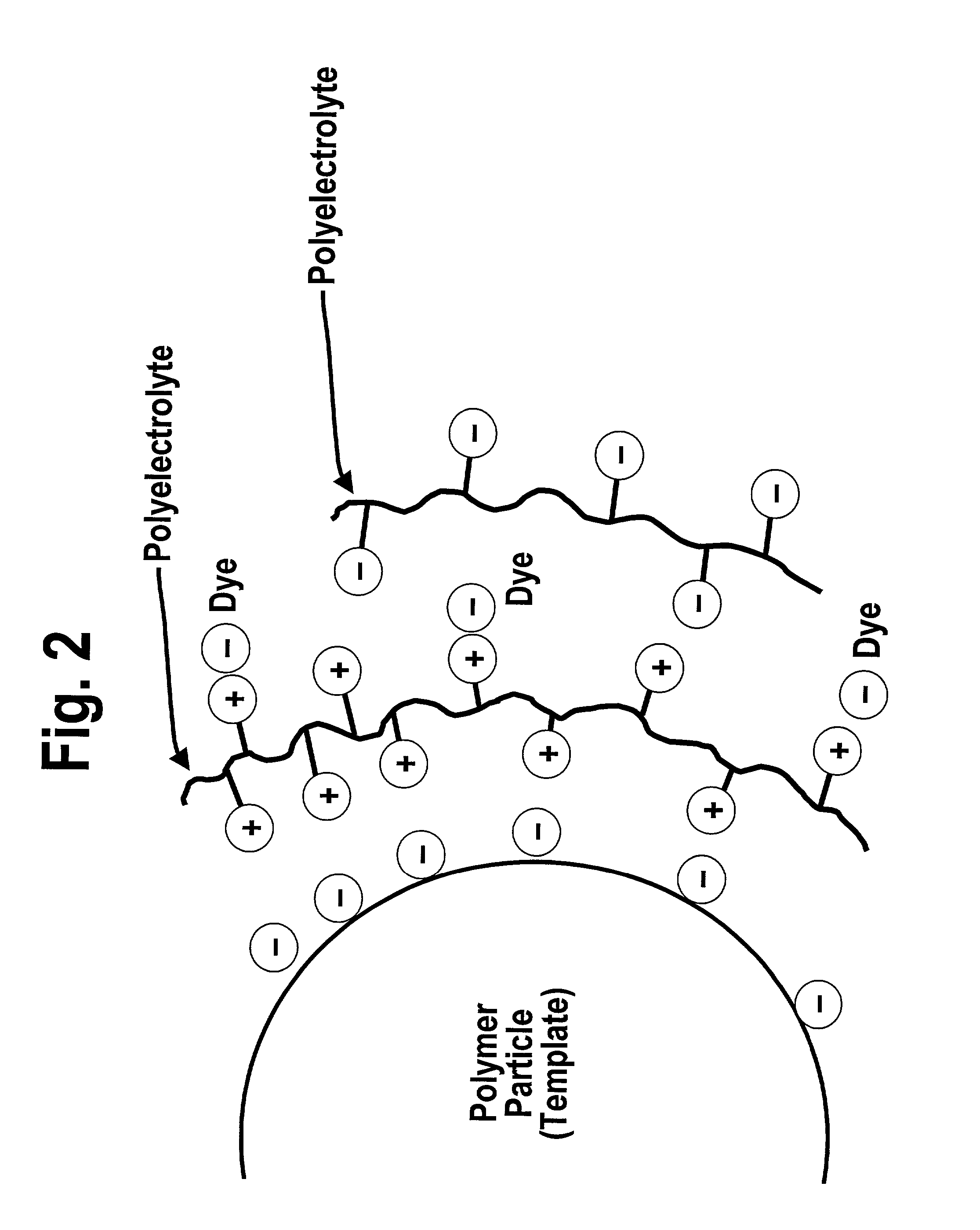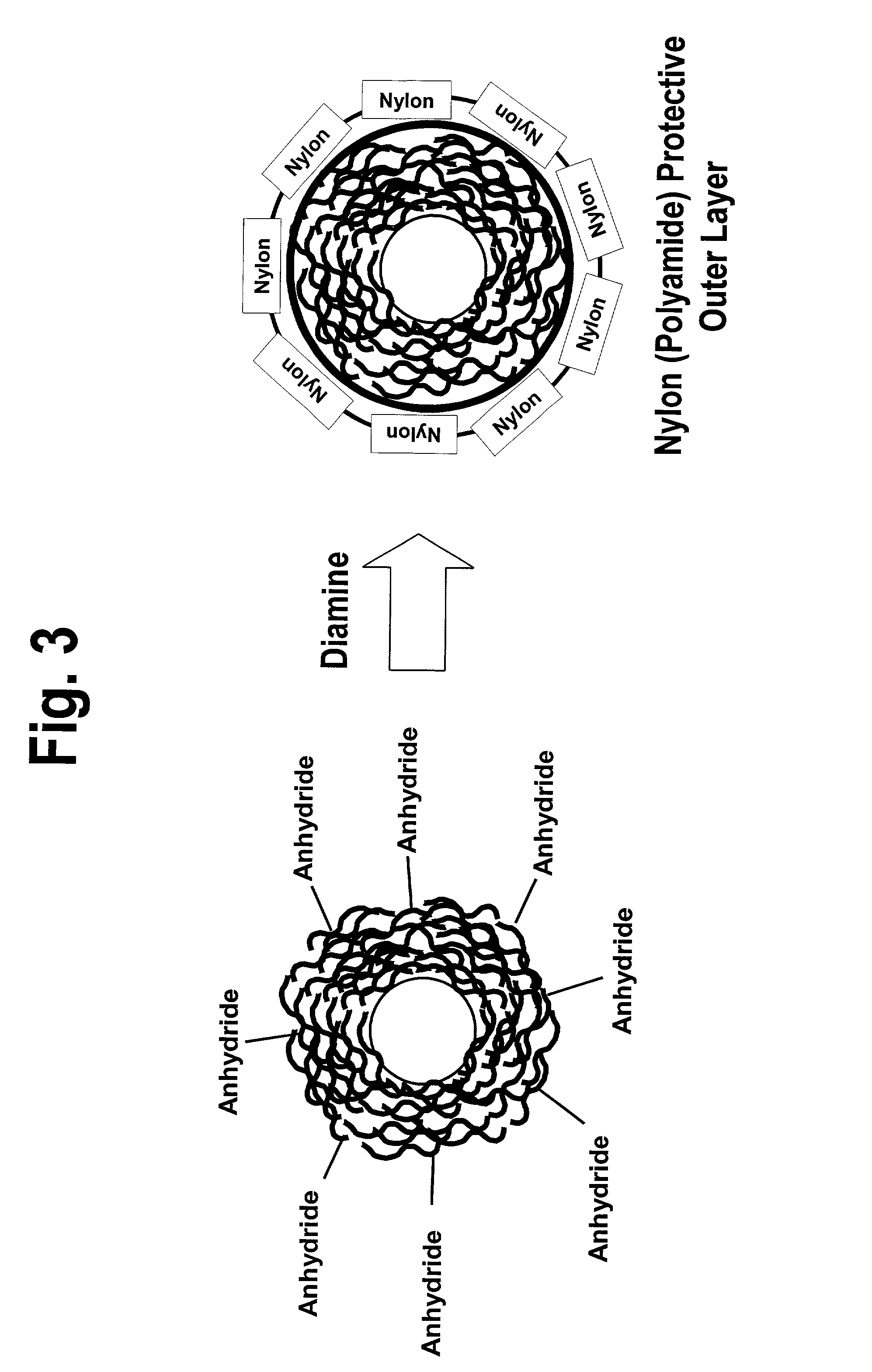Recording medium with nanoparticles and methods of making the same
a technology applied in the field of nanoparticles and recording media, can solve the problems that the observation of the fading of a particular colorant on a particular substrate cannot be applied to colorants and substrates in general, cannot always be the case, etc., and achieves fine adjustment of the color and other properties of the recording medium, high shear emulsification, and strong coulombic attraction
- Summary
- Abstract
- Description
- Claims
- Application Information
AI Technical Summary
Benefits of technology
Problems solved by technology
Method used
Image
Examples
example 1
Preparation of Organic Polymer Nanoparticles Containing a Subphthalocyanine Dye
[0101]Poly(α-methylstyrene) polymer (1 g) was dissolved in xylene solvent (9 g) to which the subphthalocyanine dye “KCSUBP” (0.1 g), shown in the structure below (where R1-R2═H; Z═OC6H3-3,5-Me2), was added.
[0102]
This organic phase was kept at ca. 10–12% wt / wt combined polymer+dye in xylene. The concentration of dye was 9% wt / wt of dye in dye+polymer. Additionally, Texanol® plasticizer (0.05 g, Eastman Chemical Company, Kingsport, Tenn.) was added at a concentration of 5 wt % on the polymer. Ten grams of the organic phase (polymer+solvent) were mixed with 90 grams of the aqueous phase in a narrow glass vessel containing 1.5 wt % surfactant mixture of 50:50 wt / wt of NF-EO20 (Berol 292), 0.675 g; and NF-E06 (Berol 02), 0.675 g (Chemax Inc., Greenville, S.C.); in 88.65 g water.
[0103]The solution was subjected to 2 minutes of shearing in an Ultra-Turrax T25 from Janke & Kunkel GMBH at 12,000 rpm followed by 2 ...
example 2
Preparation of Organic Polymer Nanoparticles Containing Various Dyes
[0105]The preparation of a dye-containing nanoparticle was undertaken as described in Example 1, using chlorinated polyisoprene polymer in place of poly(α-methylstyrene) polymer to afford a dye-containing nanoparticle. Mixtures of poly(α-methylstyrene) and chlorinated polyisoprene polymers could also be used. Similarly, the preparation of a dye-containing nanoparticle was undertaken as described in Example 1, using Unigraph red 1971 and / or Uniplas red 1458 dyes (United Color Manufacturing, Inc., Philadelphia, Pa.), in place of the subphthalocyanine dye, to afford a dye-containing nanoparticle. In each case, after dialysis, a colored suspension of nanoparticles was obtained.
example 3
Preparation of Organic Polymer Nanoparticles Comprising Polyvinyl Alcohol and Sudan III
[0106]The preparation of a dye-containing nanoparticle was undertaken as described in Example 1, using polyvinyl alcohol polymer. Thus, nanoparticles were produced by using 50,000–70,000 molecular weight (Mn) polyvinyl alcohol polymer in the two phase oil / water emulsion system described above. Sudan III dye was incorporated into the nanoparticle system by dissolving it in the oil phase (toluene) along with the preformed polyvinyl alcohol polymer, and then mixing oil phase with a water / surfactant phase. High shear mixing was accomplished using a microfluidizer (Model 110F, Microfluidics Corp., Newton, Mass.) to form nanoparticles from about 21 to about 29 nm in diameter. Using this method, nanoparticles containing from about 1% wt / wt up to about 15% wt / wt dye were prepared.
PUM
| Property | Measurement | Unit |
|---|---|---|
| size | aaaaa | aaaaa |
| zeta potential | aaaaa | aaaaa |
| zeta potential | aaaaa | aaaaa |
Abstract
Description
Claims
Application Information
 Login to View More
Login to View More - R&D
- Intellectual Property
- Life Sciences
- Materials
- Tech Scout
- Unparalleled Data Quality
- Higher Quality Content
- 60% Fewer Hallucinations
Browse by: Latest US Patents, China's latest patents, Technical Efficacy Thesaurus, Application Domain, Technology Topic, Popular Technical Reports.
© 2025 PatSnap. All rights reserved.Legal|Privacy policy|Modern Slavery Act Transparency Statement|Sitemap|About US| Contact US: help@patsnap.com



